I was at Andrew Molera State Park and Pfeiffer Beach in Big Sur the last couple of days. I put together some videos that I shot there this time plus some Big Sur video from two years ago to make an eight minute You Tube video,“What is Gnarl?” Windows Moviemaker is actually a pretty nice tool. I’d like to clean up the soundtrack, but, hey, it’s gnarly as is.
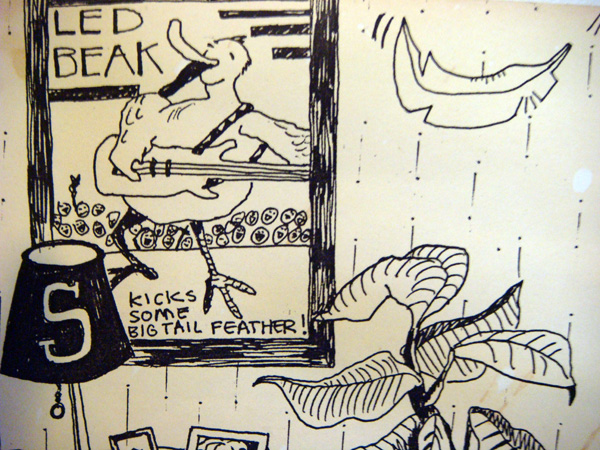
By way of footnote, the bit in “What is Gnarl?” about the seagulls shaking their tailfeathers relates both to Donald Duck in White Light, and to a detail of a drawing that Georgia Rucker did for the Swarthmore College freshman face book, the Cygnet, 1994.

I wrote an essay, “Our Synthetic Futures,” for Newsweek International and it’s online. It describes some possible (fun) outcomes of genomics and synthetic biology. Close students of my work will note that some of these ideas are prefigured in my futurological novel, Saucer Wisdom.
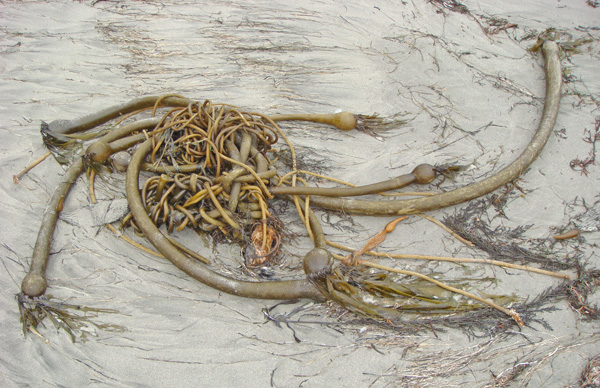
So, like I say, I was in Big Sur the last couple of days. Sitting on a hillock looking at the sea, I had a nice feeling of not thinking. Like what was going on outside didn’t need embellishment. It was exactly what I like. Usually I’m adding ideas, like the little robots watching the bad movies in Mystery Science Theater 3000, or the original Beavis and Butthead commenting on cheesy videos while they play. That’s consciousness, isn’t it, the little comment-bot. But the narrator takes a break when the show is fabulous.
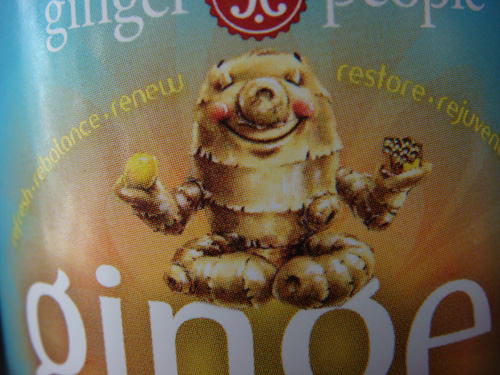
Picture of a ginger root doing yoga from my bottle of Ginger Soother. Here’s a relevant (to not thinking) quote from Pynchon:
“…and now, in the Zone,…after a heavy rain he doesn’t recall, Slothrop sees a very thick rainbow here, a stout rainbow c*ck driven down out of the pubic clouds into Earth, green wet valleyed Earth, and his chest fills and he stand crying, not a thing in his head, just feeling natural… Thomas Pynchon, Gravity’s Rainbow (Penguin 2000 edition), p. 638.
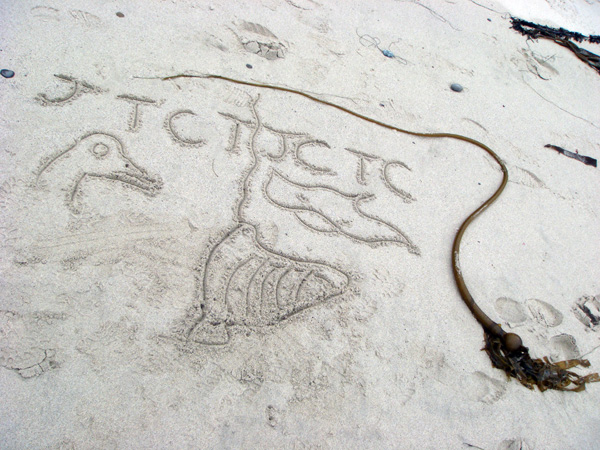
Now I’m trying to get going on Chapter Three again. I thought about the book a certain amount while at the beach. I remembered having a big insight about the story for Mathematicians in Love on Pfeiffer Beach two years ago, and drawing a diagram on the sand. So, for good luck, even though I didn’t have any big insight this time, I drew a diagram of the chapter sequence of POV (points of view) for Hylozoic, along with a picture of a Peng, the Magic Harp, and a Hrull, nicely framed by a kelp stalk. The letters stand for my characters, Jayjay, Thuy and Chu, and I use them to indicate whose point of view I use for the successive chapters. I see the book breaking into two parts, with the sequences J TCT and J CTC.

All these characters appear in my forthcoming novel Postsingular too, by the way. Speaking of Postsingular, I might mention that I got a copy of Word 2007 free from Microsoft for sending in the (apparantly) pirated Word 2003 disk that I’d bought at Fry’s. Word 2007 does a much better job of converting from DOC to PDF than Adobe Reader Professional ever did for me and, hooray, it fixed all the internal links in my three-hundrd page Postsingular Writing Notes PDF document now—you can find the PDF at the Postsingular site.
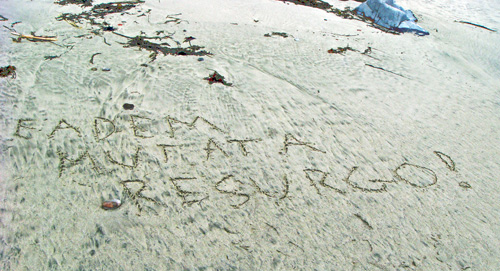
And then I drew the slogan that sparked Frek and the Elixir: “Eadem Mutata Resurgo.” The same, yet changed, I rearise. I wrote this on the beach in 2001. It became Professor Bumby the cuttlefish’s slogan.
Some people walking by decided I really was strange. But everyone expects to see weirdos in Big Sur.
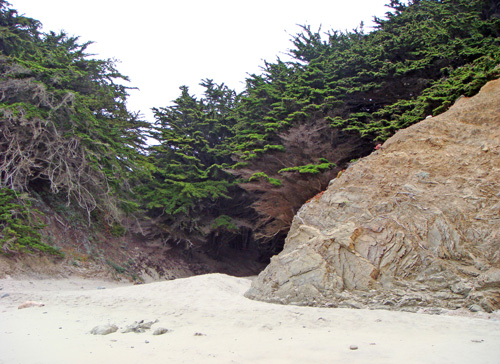
Earlier I’d spent about half an hour rolling crossways on a log, face up, massaging my back in this fashion, groaning with pleasure. I chose the log to be a bit out of the way, in a little gully where I always like to go, the same gully where I filmed the eddy and the plant silp for “What Is Gnarl?”
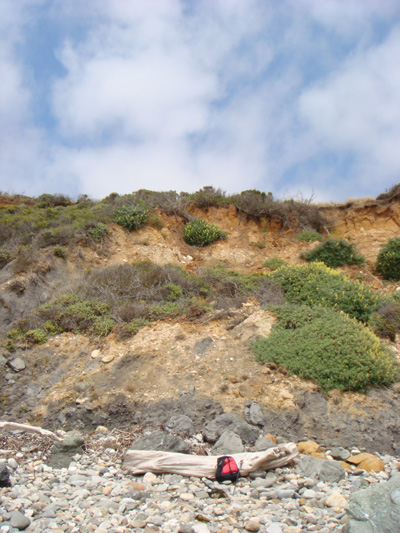
When I was done rolling on the log, and sitting up a bit drunk with chi energy, a couple walked by. The woman said:
“I don’t have my glasses with me and at first when I saw you, I thought you were a mammal.”
“I am a mammal,” I replied.
“I mean like a bobcat or a bear,” she amplified.
“I was getting down to my mammal self,” I said.

Anyway, those were the two who then saw me drawing the Peng’n’Hrull with points-of-view diagram for Hylozoic with my cane.
“Val fisk,” I told them, by way of explanation. But, you know, sometimes it just gets too remote…
By the way, “val fisk” is Swedish for “whale fish,” as “discussed” in my film, “What is Gnarl?”
I just checked on Google, and there are some women actually named Val Fisk, like one is a teaching assistant in Suffolk, England. How great is that?









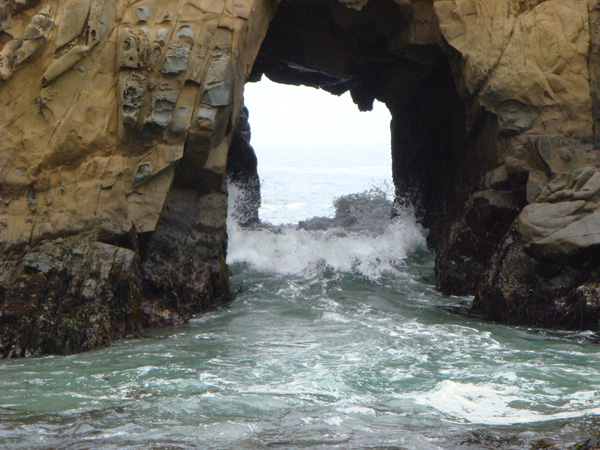
June 1st, 2007 at 5:23 am
this is a great post rudy. I feel like I should have something more to say about it, but what the hell.
June 1st, 2007 at 6:05 am
I like your Newsweek article, care to share how that came about?
I’ve had some thoughts recently about genetic modification and the idea that “the genome is the ecosystem.” I contend that it is an error to think of a species as existing in isolation from its ecosystem. When we modify ourselves we are modifying the ecosystem, and when we modify the ecosystem we modify ourselves. Another way of saying this is that species don’t actually exist, but that there is a quasi-stable computation that is an ecosystem.
I think it was an article in Science News that brought this idea to the fore about genetically modifying mosquitoes so that they would not transmit malaria. As you have suggested for a long time we will not only modify ourselves but the world around us. And I’ll add we have no way of predicting the outcome. But as I said to you once before, our progeny will no more recognize us as them than we see Lucy as one of us.
June 1st, 2007 at 10:41 pm
I find that Gnarl is everywhere once I start looking for it. I passed the remnants of a tree in town a few weeks back that someone was trying to unearth and snapped a shot with my phone (funny–5 years ago that would sound sci-fi-esque), and I visited my parents in the Black Hills last weekend and took a picture of the “decorative” pine tree roots at their driveway entrance. Very gnarly.
The keyhole rock at Big Sur is one of my favorite places–actually, the entire central coast is one of my favorite places. The irregularity of the rocks, the trees, and the waves somehow calm me so.
June 3rd, 2007 at 5:51 am
Gnarl is synonymous to quatum computation, that due added dimensions of processing on molecular level represents itself as gnarly objects when viewed on 3D by human eye. I got the idea while reading Endless Forms, Most Beautiful – combined with re-reading Herbert’s Quantum stuff.
It’s all about HEAVY Quatum Computation happening there in the engine room. For example, even the most powerful supercomputer cannot simulate a simple protein folding that happens billions of times per seconds in a cell. Proteins fold according to the proxy wave structures of individual amino acid molecules within the sequence and form a new folded structure, that interacts according to its quantum wave structure with other proteins.
It’s like the QC layer was designed to be self-assembling to take account of proxy wave probabilities, so that it is easy to lay out a new blueprints, and then just let them self-assemble.
Thus, “an insect”, or “a human” is a product that generates “some profit” for the company, who “launched the product”. The questions is obviously what profit do they make 🙂
June 4th, 2007 at 7:32 am
Rudy, there was a song on the radio a few years back along the lines of ‘you and me baby ain’t nothin but mammals, let’s do it like they do on the Discovery Channel.” Maybe the lady was a fan. You shoulda wheenked at her.
“Eadem Mutata Resurgo.” Basically what I groan every morning when the alarm goes off, except that I translate it into scatological terms.
June 6th, 2007 at 12:36 pm
In the Newsweek column, Rudy compares artificial bacteria to gangsta-clothed MIT nerds meeting the real homies.
It’s been observed that invasive species have fewer parasites.
It’s also been observed that bacteriophages play a major role in keeping bacteria in check.
Suppose a bacterium is developed with non-standard DNA coding, either for convenience of the researchers, or in a well-intentioned attempt to keep it from sharing artificial genes with natural bacteria.
Sure, it would probably have trouble competing with natural bacteria for resources. But on the other hand, it would be completely immune to all bacteriophages.
IANABiologist, but this sounds to me like a really, really bad idea. (Protozoa would presumably continue to eat them. But invasive species have *fewer* parasites, not always none–about half as many, IIRC.)
I haven’t seen this aspect of artificial bacterial genomes discussed anywhere. Has anyone here?
Chris
June 7th, 2007 at 10:32 am
Don’t make fun of my name or I’ll send my sister Delphine over to beat you up.